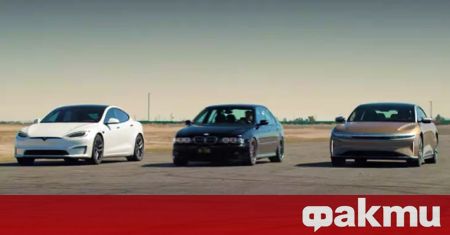In 2000, the fastest sedan on the planet was the BMW E5 of the E39 generation, but with the advancement of technology, the balance of power has shifted in favor of electric vehicles. Now the speed and acceleration records are held by Tesla Model S and its emerging competitors, such as the latest Lucid Air. But what are the two newest electric cars capable of against the backdrop of an old-school sedan with a petrol turbo engine. We show you a face-to-face confrontation.
Introduced in 1998, the BMW M5 with in-house index E39 received a V8 engine for the first time in the model’s history. The naturally aspirated petrol engine produces 400 horsepower and, combined with a six-speed manual transmission, allows the luxury sedan to accelerate from standstill to 100 km / h in 4.8 seconds, and without an electronic speed limiter it can reach almost 300 km / h.
Such features have made the M5 E39 the fastest sedan in the world. But in 2022, those numbers seem modest. Even the 500 Nm of torque of the 20-year-old BMW pales in comparison to electric vehicles. And even the weight of 1,795 kilograms does not give an advantage.
The three-engine Tesla Model S Plaid is heavier (2,162 kilograms), the twin-engine Lucid Air Dream Edition (2,375 kilograms) as well, but they have an advantage in power and torque – 1,020 horsepower and 1,227 newton meters for Tesla and 1,111 horsepower and 1,390 Nm for Lucid. However, the numbers themselves are not as important as the ability to put them into practice. See what happens in the race in a straight line.
Rate:
☆
☆
☆
☆
☆
–
Grade 2.7 from 19 voice.
–
– –


